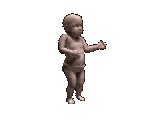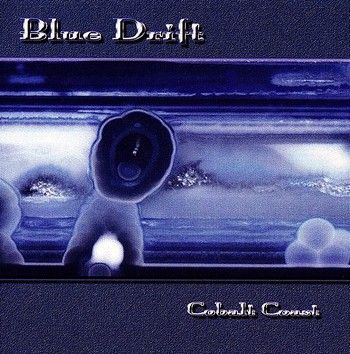
Alan Pasqua - The Anti-Social Club - 2007 - Cryptogramophone
Keyboardist Alan Pasqua is the headliner on "The Anti Social Club," however, that doesn't mean he has to be the star. But -- wait a minute -- let's just give him credit for putting together a jazz band that is shaped by rock elements, yet never loses its jazz roots. In displaying that, the band is dominated easily by the work of guitarist Nels Cline, a star of Wilco, and trumpeter Ambrose Akinmusire. The guitarist, for instance, is the heart of "George Russell" a hard-working blues, and also sets the course for "New Rhodes." The latter number eventually becomes the home of the trumpeter and saxophonist Jeff Ellwood. The piece also is driven by bassist Jimmy Haslip from the Yellowjackets. Akinmusire stands out on a meditative "Prayer" and the jazz-leaning title cut. None of this is to suggest Pasqua doesn't help the effort. He offers a strong solo on "New Rhodes" and his backup work throughout the album provides a richness that makes the seven-piece band sound bigger than it is. © Bob Karlovits Pittsburg Tribune [November 2007]
Alan Pasqua, “The Anti-Social Club” (Cryptogramophone). If this sounds like some of the best jazz/rock fusion since its embattled heyday, that’s because keyboardist Alan Pasqua is as hip and pedigreed a producer of it as you’ll find. Back in the day, he played in Tony Williams’ Lifetime and studied with the great jazz composer and theorist George Russell. The latter is no small thing and leads to a tune dedicated to Russell on Pasqua’s new disc on which he makes the Fender Rhodes piano sound good again, as if we were all listening to “In a Silent Way” by Miles Davis. All virtuosity is high-protein, then, not empty. As a West Coast studio musician, Pasqua has played, too, with a list of rock and pop musicians as long as Shaquille O’Neal’s arm, which means he knows a thing or two about hooks and electronic seasonings. It’s a standard saxophone/trumpet/guitar sextet with percussion added and it’s got energy and ideas to burn — which, in fact, it sometimes does. © Jeff Simon Buffalo News [November 2007]
Keyboardist Alan Pasqua is one of those jazz cats who grew successful in pop music. Pasqua toured for years with Bob Dylan and Carlos Santana. Before that, in the mid-1970's he was recruited to be in Tony Williams' Lifetime, led by the former Miles Davis drummer. Pasqua reignites the jazz flame with this sextet that uses 1970s funk as a starting point. The set also includes some requisite spaciness and a knack for melody amid the beats. The title track is a cool, slinky number that leads to a lip-splattering climax. "George Russell," named for Pasqua's teacher at the New England Conservatory of Music, sounds as if it could be coming out of a 1970s Cadillac. The big bass line sets up some keyboard histrionics. The session is both acidic and spiritual. "Prayer" quivers handsomely without a steady pulse, while "Fast Food"throbs with Jimmy Haslip's bass and Nels Cline's guitar. Trumpeter Ambrose Akinmusire and saxophonist Jeff Ellwood offer up some heavy horn work on this set that looks forward and backward, and has fun doing it. © Karl Stark The Philadelphia Inquirer [November 2007]
Alan Pasqua's previous recording (Standards, on Fuzzy Music) was a very subtle (and very fine) acoustic piano trio album. The Antisocial Club is not acoustic and not subtle. Whether you think it is fine depends on how you feel about a particular aesthetic, exemplified by early electric Miles and Herbie Hancock's Mwandishi albums. It is possible that this album will make some converts in the acoustic community of electric-jazz naysayers. While it has much that they dislike about fusion--the heavy repetitive rhythms (one man's groove is another's monotony), the electric keyboard twitterings and splashes that fill every cranny of available musical space, the indulgent, grandiose hooks--in also contains elements that most fusion lacks. Among these are brains, creativity, adventurousness and real solos. Pasqua writes cool little tunes and arranges them into large, dynamically diverse concepts that provide openings for the strong voices in his ensemble. Guitarist Nels Cline pleasingly trashes "George Russell" in wild quivers and squeals. Jeff Ellwood's soprano saxophone whirls in a dizzying dervish on the title track, and releases into an exhilarating, shrieking catharsis on "Wicked Good." On "prayer," reminiscent of Miles' In A Silent Way, Ambrose Akinmusire long, pure trumpet lines melt into and out of the ambient stasis. But Pasqua is the leader, and in the sheer density of information that is this album, his various keyboards provide the content that is the nastiest, the funkiest, the most lyrical and the most startling. © Thomas Conrad Jazz Times [January/February 2008]
What if Miles Davis had decided to stick with the music of the Bitches Brew/Cellar Door period, circa 1969-1970, and develop within that genre rather than continuing to move in other directions? Perhaps his music would have sounded like Alan Pasqua's The Anti Social Club. The grooves and basslines on the seven originals are reminiscent of Davis' music of the era although the updated electronics, the individual voices, and the spirit of this group differ. Keyboardist Alan Pasqua (a former member of Tony Williams' Lifetime) sounds quite at home in the early-'70s funk/fusion setting, trumpeter Ambrose Akinmusire is a bright new voice on his instrument, and each of the musicians makes strong contributions. While there are solos, the "accompaniment" is so active that most of the music sounds like explosive ensembles. Fans of Miles Davis' music of his early electronics period will find this set to be a brilliant extension on Davis' ideas, and a fresh way of playing fusion. Highly recommended. © Scott Yanow All Music Guide [October 2007]
A veteran keyboardist who’s played with Tony Williams in his Lifetime band, Alan Pasqua has released a seven track jewel of a fusion masterpiece that harkens back to Miles (i.e., In A Silent Way), the Headhunters, and Weather Report. In fact, every time I listen to The Anti Social Club, I keep hearing more influences. For some reason, the tunes, for me, are very familiar – I mean that in a good way. This may be a stretch, but here’s why: I was a very big fan of Tony Williams last great band, the one with Mulgrew Miller, Wallace Roney, Billy Hart, and Charnett Moffett. Williams was doing a lot of interesting writing over those last four or five recordings. Pasqua’s compositions remind me of an electric version of that group – or more precise, what may have developed had Williams not died at such a young age. Yes, I know it’s a stretch, and Pasqua last played with Williams a long time ago, but just listen to the trumpet of Ambose Akimusire and the sax of Jeff Elwood, their solos, the song structure………just maybe, who knows. The Anti Social Club is heady, horn driven fusion, with Pasqua’s spacey distortion ridden keyboards front and center. Nels Cline is very solid on guitar, along with Jimmy Haslip of the Yellowjackets on bass, Scott Amendola on drums, and Alex Acuna rounding out the group on percussion. I’ve never heard of Akimusire, who has a sound that reminds me of Freddie Hubbard, back in his CTI days, or Elwood before; Pasqua was wise to use them as foil to his keys. One last comment, “New Rhodes” – Crank It Up! By & © John Luciano on Dec 15, 2007 in reviews © ContemporaryJazz.com 2011 http://www.contemporaryjazz.com/review-alan-pasqua-the-anti-social-club/
A brilliant album of contemporary jazz fusion from the very experienced pianist Alan Pasqua. The great Jimmy Haslip plays bass, and Nels Cline of Wilco plays some great guitar. David Carr of the New York Times described Nels as "one of the best guitarists in any genre." He was also named the 82nd greatest guitarist of all time by Rolling Stone magazine in November 2011. Jazz Times called him "The World's Most Dangerous Guitarist." This is not primarily a guitar orientated fusion album, but players like Nels certainly help. The album is VHR by A.O.O.F.C. Read a review at AAJ @ http://www.allaboutjazz.com/php/article.php?id=27529 Listen to Holdsworth, Pasqua, Haslip, Wackerman's great "Blues For Tony" album and Nels Cline's "New Monastery: A View Into The Music Of Andrew Hill" album. [All tracks @ 320 Kbps: File size = 119 Mb]
TRACKS
1 The Antisocial Club (9:48)
2 George Russell (10:28)
3 Prayer (3:36)
4 New Rhodes (7:57)
5 Fast Food (8:22)
6 Wicked Good (9:08)
7 Message to Beloved Souls Departed (4:48)
All tracks composed by Alan Pasqua
MUSICIANS
Alan Pasqua - Keyboards, Piano
Nels Cline - Guitars
Jimmy Haslip - Bass
Scott Amendola - Drums
Alex Acuna - Percussion
Jeff Ellwood - Saxophones
Ambrose Akinmusire - Trumpet
BIO (WIKI)
Alan Pasqua (born June 28, 1952 in New Jersey) is a jazz pianist, educator and composer who co-composed the CBS Evening News theme. He also has had an extensive career in pop and rock music, most notably as a founding member, keyboardist and songwriter of the 80s hard rock band, Giant. He studied at Indiana University and the New England Conservatory of Music. His latest album Twin Bill, released on October 20, 2011, has been recently nominated a Grammy award. Pasqua grew up in Roselle Park, New Jersey. Pasqua joined The New Tony Williams Lifetime and appeared on the albums Believe It and Million Dollar Legs. He then went on to perform with Eddie Money's band, after which he then joined Bob Dylan's band. Pasqua recorded two albums with Dylan (Bob Dylan at Budokan and Street-Legal). In the 1980s he performed with John Fogerty on the album Eye of the Zombie, with Starship on the album No Protection and joined Carlos Santana as keyboardist on Marathon, Zebop! and Havana Moon. He was also a founding member of the late-1980s rock band Giant, and he co-wrote the band's biggest hit, "I'll See You in My Dreams." Later he composed and performed jazz, including trio recordings with Peter Erskine (including the CD Standards). He has also recorded with Allan Holdsworth. He is currently chair of Jazz Studies, Associate Professor, at the University of Southern California. In 2007, he married Lina Brunkell. He has one daughter, Greta, born 1998, from a previous marriage.
MORE
Alan Pasqua, Chairman of Jazz Studies at USC, was born in New Jersey and began studying piano at the age of seven, playing both classical and jazz. He attended Indiana University and received his bachelor’s degree in jazz studies from the New England Conservatory. While performing a concert at Carnegie Hall, Pasqua met the legendary drummer Tony Williams. Pasqua was asked to join The New Tony Williams Lifetime along with guitarist Allan Holdsworth. After recording two “Lifetime” albums for Columbia Records, Pasqua relocated in Los Angeles. His career in L.A. broadened as he started playing with more rock and pop artists. He has been a member of the bands of Bob Dylan and Santana. Some of his other pop album and touring credits include: Ray Charles, Aretha Franklin, Elton John and Queen Latifa. In addition, he has worked with composers John Williams, Quincy Jones, Dave Grusin, Jerry Goldsmith and Henry Mancini and on motion picture soundtracks. In addition, Alan composed the soundtrack for Disney’s hit movie, The Waterboy, starring Adam Sandler. In the jazz world, Pasqua has played and recorded with Jack Dejohnette, Paul Motion, Dave Holland, Michael Brecker, Randy Brecker, Joe Henderson, Stanley Clarke, Gary Burton, James Moody, Gary Peacock, Gary Bartz, Reggie Workman, The Thad Jones/Mel Lewis Jazz Orchestra, Sheila Jordan and Joe Williams. Aside from his many critically acclaimed recordings as a leader, in 2008, Pasqua joined forces with Peter Erskine and Dave Carpenter, arranging, co-producing and playing on the Grammy Award nominated trio album “Standards”. His latest release, “Twin Bill” features Pasqua recorded on two pianos, playing the music of Bill Evans. This CD will be released Fall 2011 on the BFM Jazz label. © 2011 Alan Pasqua http://alanpasqua.com/biography/













